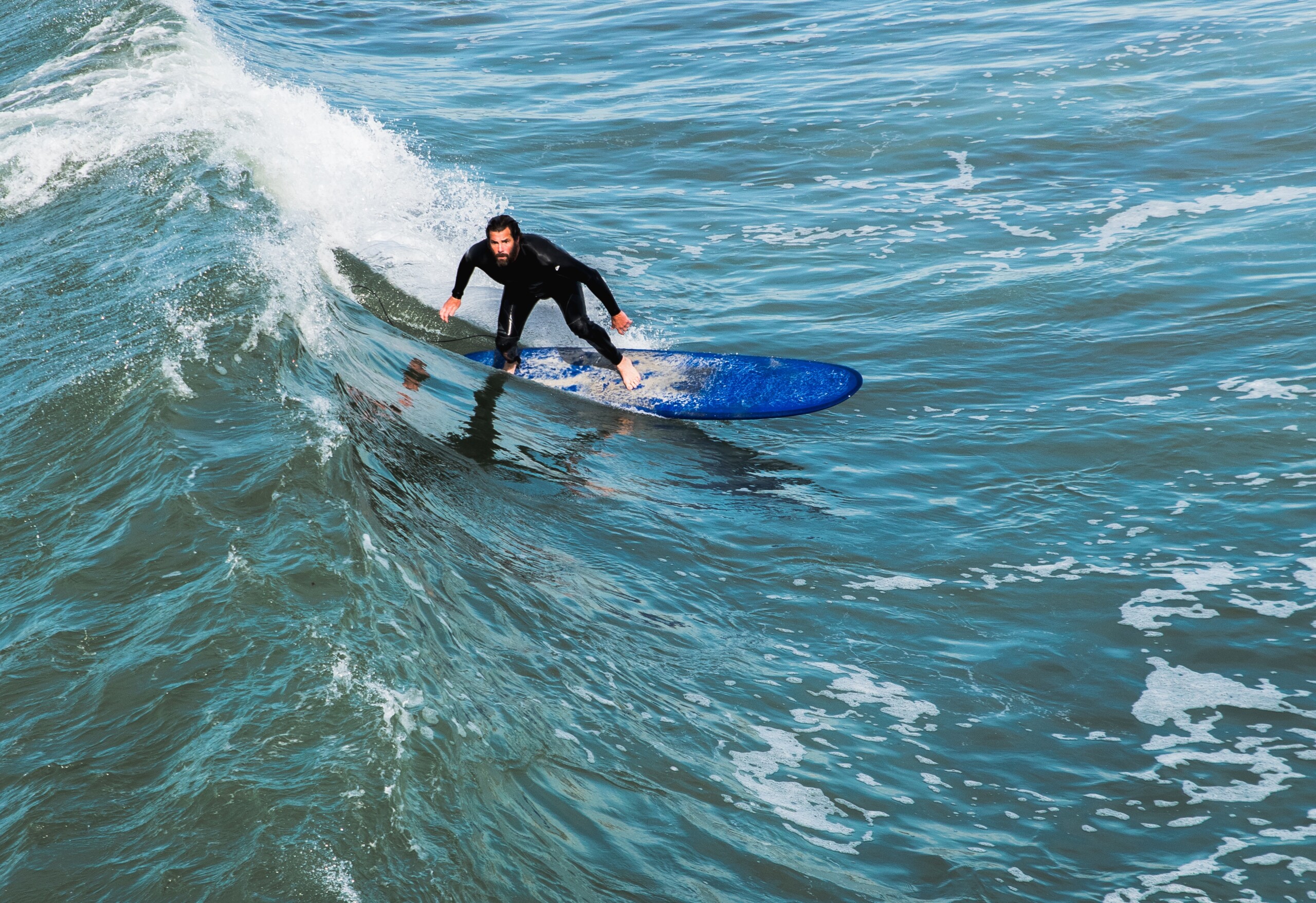Surfing is an exhilarating and addictive water sport that allows you to connect with the power of the ocean. As a beginner surfer, mastering fundamental techniques is crucial for a safe and enjoyable experience in the waves. One such fundamental skill is the “bottom turn.” Let’s dive into what the bottom turn is, why it’s essential, and provide step-by-step guidance on how beginner surfers can learn and perfect this foundational maneuver. Looking for a more hands on experience? Check out San Diego Surf School and how we can help you perfect this essential maneuver.
What is a Bottom Turn?
A bottom turn is a fundamental maneuver in surfing that involves turning your surfboard at the base of a wave. This maneuver sets you up for various other moves, such as cutbacks, top turns, and even riding the wave’s face. The bottom turn is like the cornerstone of your surfing skills, as it enables you to harness the wave’s energy and navigate it effectively.
Why Master the Bottom Turn?
- Control: A proper bottom turn provides stability and control, allowing you to adjust your positioning on the wave. This control is essential for maintaining balance and preventing wipeouts.
- Gain Speed: The bottom turn generates speed, which is vital for catching and riding waves effectively. Without a solid bottom turn, you may find it challenging to keep up with the wave’s energy.
- Set Up for Other Maneuvers: As mentioned earlier, the bottom turn is the foundation for many advanced maneuvers. Once you’ve mastered it, you can progress to more exciting and dynamic surfing techniques.
Step-by-Step Guide to Learning the Bottom Turn:
Now that you understand the importance of the bottom turn let’s break down how to learn and execute this maneuver as a beginner surfer.
1. Select the Right Wave:
Choose a small, mellow wave with a consistent break for practicing your bottom turn. This will reduce the risk of wipeouts and allow you to focus on technique.
2. Paddle Out:
Position yourself properly on the surfboard, lying flat with your chest near the center. Paddle out to the lineup and wait for the right wave.
3. Catch the Wave:
As the wave approaches, start paddling to match its speed. As you feel the wave lifting your board, pop up to your feet using the proper technique (one foot at a time).
4. Eye the Bottom Turn Spot:
Identify the section of the wave where you intend to perform your bottom turn. This should be a point where the wave starts to peel or break.
5. Start Your Turn:
As you approach the bottom turn spot, shift your weight slightly toward the back foot. Begin your turn by angling the board up the face of the wave.
6. Carve the Turn:
Use your back foot to engage the board’s rail (the edge of the board) in the direction you want to turn. Lean your upper body in the same direction, extending your arms for balance.
7. Maintain Speed and Control:
As you complete the bottom turn, keep your eyes focused on where you want to go next. Use your front hand to guide the board and maintain balance.
8. Ready for the Next Move:
After completing the bottom turn, you can choose to ride the wave straight down the line, perform a cutback, or proceed with another maneuver. The key is to stay low and centered on your board for stability.
The bottom turn is a fundamental skill that every beginner surfer should learn. It provides control, speed, and sets the stage for more advanced maneuvers in your surfing journey. Remember, like any skill, mastering the bottom turn takes practice, patience, and dedication. So, head out to the waves, keep practicing, and soon you’ll be riding the waves with style and confidence. Enjoy your journey as you progress in the exciting world of surfing! Check out this link if you’re looking for a visual aide on the bottom turn.
















